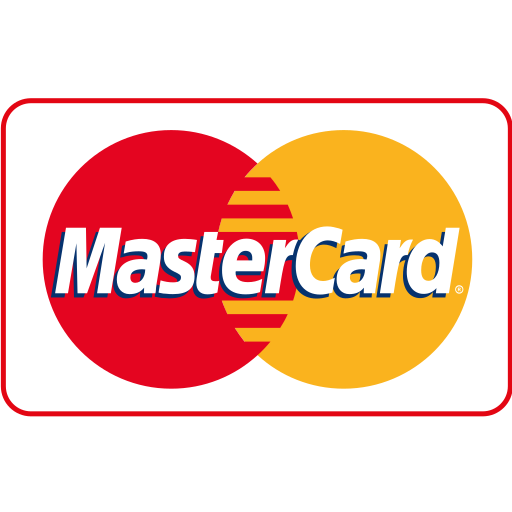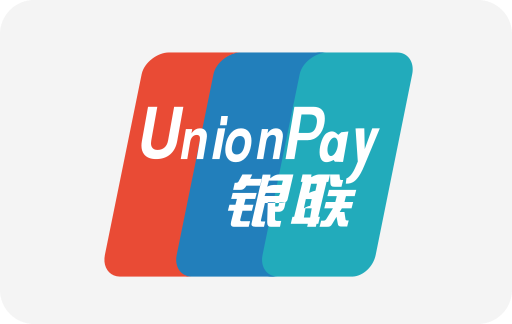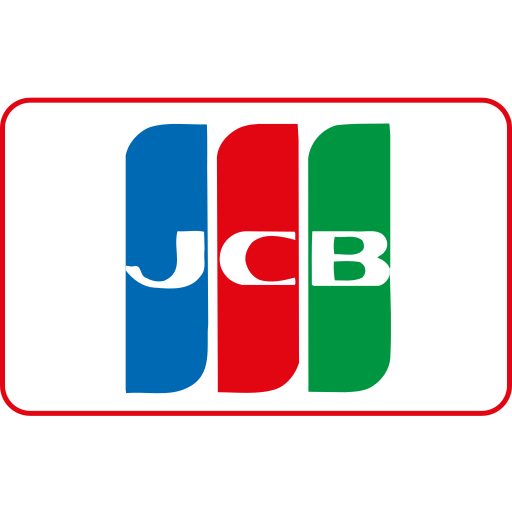
Cutting Through the SEO Noise
In today's digital landscape, SEO is often surrounded by a cloud of hype, misinformation, and countless quick-fix promises. As a freelancer based in Singapore, learning SEO felt like navigating through a maze filled with conflicting advice, costly courses, and complex jargon. Yet, after 90 days of rigorous application and learning, I managed to rank competitively for targeted keywords without falling into the hype trap. In this webinar-style article, I share my no-fluff blueprint designed specifically for freelancers who want to grasp SEO fundamentals effectively and see tangible results without unnecessary complexity.
Why Bypass the SEO Hype?
The SEO industry is saturated with 'magic bullet' strategies and expensive tools promising instant success. Much of this hype diverts attention from the core principles that matter. For freelancers, especially those starting out or working on limited budgets in Singapore’s competitive market, it's crucial to get a solid foundation rather than chasing fleeting trends.
Here are common hype pitfalls I encountered and why they don't work:
- Overemphasis on backlinks: While backlinks are important, obsessing over acquiring them without quality control can backfire.
- Chasing Google algorithm rumors: Constantly pivoting based on unverified rumors leads to wasted effort.
- Reliance on expensive automation tools: Many paid tools provide data but cannot replace strategic thinking and manual work.
- Ignoring user experience: Ranking depends heavily on real user behavior, which many hype-driven strategies neglect.
Step 1: Establishing Clear, Realistic SEO Goals
Before diving into any SEO tactics, I recommend setting SMART (Specific, Measurable, Achievable, Relevant, Time-bound) goals. For example, I aimed to achieve Google top 10 rankings for three niche keywords relevant to my freelancing services within 90 days. Key considerations when setting goals:
- Target keywords with moderate competition, especially relevant to the Singapore market.
- Focus on keywords that directly attract ideal clients, e.g., "freelance digital marketing Singapore".
- Establish clear KPIs such as organic traffic growth, keyword position improvements, and conversion metrics.
Step 2: Mastering Keyword Research Without Complex Tools
You don't always need expensive keyword tools to get started. I utilized a combination of free tools and manual research:
- Google Search Console: Monitored current search queries and clicks.
- Google Autocomplete and Related Searches: Explored keyword ideas related to my niche.
- AnswerThePublic: Used this freemium tool to capture user intent questions in my niche.
- Competitor analysis: Checked competitors’ meta titles, descriptions, and keyword focus via free extensions like MozBar.
My focus was on long-tail, localized keywords, which tend to be less competitive but highly relevant. For example, "affordable freelance SEO consultant in Singapore" tended to have lower competition than generic terms.
Step 3: Creating Content That Resonates and Ranks
Content quality is king—even more so in Singapore's diverse and discerning digital audience. Here are my hard-earned lessons on content:
- Depth over breadth: Comprehensive content covering all aspects of a topic tends to engage users longer and signals authority to search engines.
- Engage local context: Including specific references to Singapore’s market, regulations, and examples increases relevance.
- Use clear, actionable language: Freelancers benefit from straightforward guides and step-by-step instructions.
- Optimize headings (H1 to H3) and meta tags: Carefully structure content to improve readability and SEO signals.
For instance, when writing about "SEO strategies for freelancers in Singapore," I included local case studies, pricing comparisons in SGD, and specific platforms popular regionally like Carousell or Hired.
Step 4: On-Page SEO Essentials Simplified
Optimizing on-page factors was a critical step in my journey. Focus on the following elements:
- Title tags: Craft keyword-rich yet natural-sounding titles around 50-60 characters.
- Meta descriptions: Write enticing summaries within 150-160 characters, incorporating keywords without stuffing.
- URL structure: Use short URLs with targeted keywords to improve click-through rates.
- Image optimization: Compress images, use descriptive alt attributes, and proper file names.
- Internal linking: Link related content pages to distribute link equity and improve user navigation.
Step 5: Technical SEO—Foundations You Can’t Ignore
Technical SEO can be intimidating, but focusing on core basics can dramatically improve site performance and rankings:
- Mobile optimization: Use responsive design since most Singapore users search via mobile devices.
- Site speed: Compress files, minimize scripts, and leverage caching to improve load times.
- Sitemap and robots.txt: Ensure proper indexing of pages by submitting sitemap to Google Search Console and managing robots.txt carefully.
- Secure your site (HTTPS): Google prioritizes secure sites, and users trust them more.
Step 6: Link Building with Authenticity and Relevance
Instead of chasing numerous backlinks, I prioritized quality and contextual relevance. Here’s my approach:
- Leverage local partnerships: Reach out to Singapore-based industry blogs, business directories, and organizations for guest posts or mentions.
- Create share-worthy content: Infographics, how-to guides, and case studies encourage natural backlinks.
- Engage in community forums and groups: Participate in groups like LinkedIn Singapore freelancers or Reddit r/Singapore to build authority and network.
Table: Breakdown of Monthly Activities and Costs in SGD
| Month | Activity | Tools/Resources | Cost (SGD) |
|---|---|---|---|
| Month 1 | Keyword research, content planning | Google Search Console, AnswerThePublic (free) | 0 |
| Month 2 | Content creation, on-page optimization | Grammarly Premium, Canva Pro | 30 (Grammarly approx. SGD 30/month) |
| Month 3 | Link building, technical SEO tweaks | Google Analytics, MozBar (free) | 0 |
Step 7: Measuring, Analyzing, and Adjusting
The last but most critical step was consistent monitoring and adjustment. Using Google Analytics and Search Console, I tracked:
- Keyword rankings and changes over time
- Organic traffic growth segmented by location, especially Singapore
- Engagement metrics like bounce rate and average session duration
- Conversions or inquiries generated from organic traffic
For example, I noticed pages optimized for Singapore-specific terms received 20% more engagement, underscoring the importance of local relevance.
Hard Lessons Learned From Real Experience
No journey is without mistakes. Here are some personal lessons that freelancers should keep in mind:
- Patience is essential: SEO is not instant. Early discouragement can lead to abandonment.
- Don’t blindly follow trends: Stick to fundamentals that align with your niche and audience.
- Quality beats quantity: One well-researched post can outperform dozens of mediocre ones.
- Local nuances matter: Singaporean audience behavior and language preferences need understanding.
- Data-driven decisions: Always back changes with analytics rather than assumptions.
Takeaway for Freelancers in Singapore and Beyond
SEO mastery is within reach if stripped of hype and focused on actionable, measurable basics aligned with your market. My 90-day blueprint proves that consistent effort, strategic clarity, and localization can move the needle significantly. Whether you freelance in Singapore or serve global clients remotely, this no-fluff approach will help you learn SEO effectively and deliver real value to your clients.
Step 8: Content Promotion — Making Your Hard Work Visible
Creating great content is only half the battle. To achieve rankings within 90 days, I actively promoted my content to boost visibility and engagement, which in turn positively influenced search rankings. Here are key promotion strategies I applied:
- Social media sharing: Published tailored posts on LinkedIn and Facebook groups targeting Singaporean freelancers and business owners.
- Email outreach: Personally contacted industry influencers and peers to share new content and request feedback or shares.
- Repurposing content: Transformed blog posts into short videos and infographics to distribute on platforms like Instagram and TikTok, channels popular in Singapore.
- Participation in online communities: Answered relevant questions on Quora and Reddit related to SEO and freelancing, linking back to my content where appropriate.
Step 9: Leveraging Local SEO Signals for Singapore-Based Visibility
Localization in SEO is often overlooked by freelancers, but it proved critical for me especially because Singapore’s small but competitive market prioritizes relevance. My approach included:
- Google My Business (GMB): Created and optimized a GMB listing targeting keywords along with Singapore-specific information such as operating hours and address.
- Local citations: Listed my freelancing services in trusted Singapore business directories like Yellow Pages Singapore and Streetdirectory.
- Localized schema markup: Implemented structured data on my website to improve how search engines understand my business location and offerings.
- Localized content: Wrote blog posts addressing Singapore government initiatives, local events, and frequently asked questions specific to the Singapore market.
Step 10: Handling Algorithm Updates Without Losing Ground
During my 90-day SEO journey, Google rolled out a core algorithm update. Instead of panic or drastic changes, I:
- Reviewed performance data meticulously to identify any drops or spikes.
- Ensured my content remained user-focused and avoided keyword stuffing.
- Maintained site health by fixing broken links and speeding up pages.
- Stayed updated with official Google announcements via their Search Central Blog and community forums.
This experience underscored the importance of resilience and adherence to SEO best practices over chasing every update.
Step 11: Building a Scalable SEO Workflow for Freelancers
To sustain and streamline SEO efforts beyond 90 days, I developed a repeatable process tailored for busy freelancers. This scalable workflow includes:
- Monthly SEO audit checklist: Evaluating technical SEO, backlinks, and keyword rankings to spot issues early.
- Editorial calendar: Planning content publication around targeted keywords and seasonal trends relevant to Singapore’s business cycle.
- Template-based outreach: Customizable email templates to efficiently request backlinks and collaborations.
- Automation of repetitive tasks: Using free scheduling tools like Buffer for social media posts and Google Alerts for competitor monitoring.
Case Study: Applying the Blueprint to a Singapore-based Freelance Client
A recent client, a freelance graphic designer based in Singapore, wanted to increase organic inquiries through Google. Applying my blueprint, we:
- Targeted the keyword "Singapore freelance graphic designer affordable" based on market research.
- Created a content series about design trends in Southeast Asia, pricing strategies in SGD, and client testimonials.
- Optimized on-page SEO, including title tags and meta descriptions aligned to local search patterns.
- Used local business directories and collaborated with Singapore-based marketing agencies for backlinks.
Within 60 days, the client’s site jumped from unranked to the first page for multiple target keywords, leading to a 35% increase in client inquiries.
Advanced Tips: Balancing SEO and User Experience
Some advanced lessons I learned revolve around the harmony between SEO optimization and user experience (UX):
- Reduce intrusive pop-ups: Google penalizes sites that disrupt user flow.
- Mobile usability testing: Use Google’s Mobile-Friendly Test and optimize taps, font sizes, and layouts.
- Use engaging multimedia smartly: Include images, videos, and charts without slowing down the page.
- Clear calls to action (CTAs): Incorporate visible, compelling CTAs on landing pages to boost conversions.
Frequently Asked Questions (FAQs) from Freelancers Learning SEO
Q1: Can I learn SEO without investing heavily in tools?
Absolutely. Core SEO knowledge can be attained through free resources and tools. Paid tools help with efficiency and deeper insights but aren’t mandatory, especially when starting.
Q2: How important is mobile SEO specifically in Singapore?
Extremely important. Singapore has a high mobile penetration rate with many users searching primarily on smartphones. Mobile-friendly sites rank better and offer better user engagements.
Q3: How soon can I expect results?
SEO results typically start showing within 3 to 6 months, depending on competition, content quality, and consistency of effort. The 90-day timeframe used here is a realistic minimum for initial rankings.
Q4: What are affordable resources for Singapore freelancers?
Resources such as Google Analytics, Google Search Console, AnswerThePublic, and Canva (free or pro plans) are excellent and wallet-friendly. Freelancers can spend as little as SGD 30–50 monthly on essential upgrades.
Summary Table: Essential SEO Elements and Recommended Actions for Freelancers
| SEO Element | Recommended Action | Tools/Resources | Estimated Cost (SGD) |
|---|---|---|---|
| Keyword Research | Focus on long-tail, local keywords | Google Search Console, AnswerThePublic | 0 |
| Content Creation | Create deep, localised content with actionable value | Grammarly, Canva | 30–50/month |
| On-Page Optimization | Optimize titles, meta tags, images | Yoast SEO (WordPress plugin) | Free or Pro (SGD 50 one-time) |
| Technical SEO | Improve site speed, mobile-friendliness | Google PageSpeed Insights | 0 |
| Link Building | Build quality, local backlinks | Email outreach, local directories | 0–10 (depending on outreach) |
| Analytics and Monitoring | Track rankings, traffic, and user behaviour | Google Analytics, Search Console | 0 |
Next Steps for Freelancers
Now that you have a robust, hype-free SEO blueprint, the key is consistent application. Allocate time weekly to execute these steps, regularly review your analytics, and adapt strategies as needed. Remember, SEO success is a marathon, not a sprint, but with the right approach, you can achieve meaningful results within 90 days.
We are the best marketing agency in Singapore.
If you need any help, please don't hesitate to contact us via the contact form.















WebSeoSG offers the highest quality website traffic services in Singapore. We provide a variety of traffic services for our clients, including website traffic, desktop traffic, mobile traffic, Google traffic, search traffic, eCommerce traffic, YouTube traffic, and TikTok traffic. Our website boasts a 100% customer satisfaction rate, so you can confidently purchase large amounts of SEO traffic online. For just 40 SGD per month, you can immediately increase website traffic, improve SEO performance, and boost sales!
Having trouble choosing a traffic package? Contact us, and our staff will assist you.
Free consultation